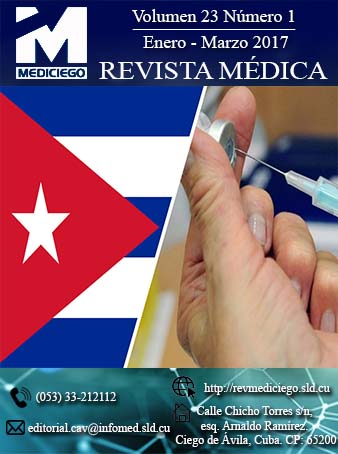Manifestaciones del maltrato infantil, repercusión social y vías para su prevención
Resumen
Introducción: el maltrato infantil es una de las expresiones de violencia más difundidas y silenciadas socialmente; es un fenómeno con causas múltiples y complejas, que produce diversos daños a la salud del niño e incide en la formación de su personalidad, su estabilidad emocional, relaciones familiares y sociales, y su futura vida adulta.
Objetivo: caracterizar las principales manifestaciones de maltrato infantil y su repercusión social en el contexto cubano actual.
Método: se revisó la bibliografía nacional e internacional sobre el tema, correspondiente a los últimos cinco años, disponible en las bases de datos CUMED, EBSCO e HINARI en español e inglés, y materiales impresos. Con la información seleccionada se elaboró una reseña estructurada.
Desarrollo: si bien no existen estadísticas fiables, debido a que algunas formas de maltrato infantil –como los descuidos en la atención hacia las necesidades alimentarias, de esparcimiento, educación y cuidados de salud de los niños– se silencian al interior de las familias, las consecuencias en los niños son visibles en formas muy variadas: desajustes emocionales, aislamiento social, agresividad, dificultades en el aprendizaje, disminución de la atención, consumo de bebidas alcohólicas y drogas, alteraciones del sueño, conductas delictivas.
Conclusiones: aunque en Cuba existe la voluntad política y se desarrollan múltiples estrategias para erradicar el maltrato infantil, es preciso que las familias, el personal de salud, educadores y la comunidad conozcan y sean conscientes de las múltiples manifestaciones de este fenómeno y su repercusión en los infantes y en la propia sociedad para que el trabajo preventivo sea efectivoDescargas
Publicado
Cómo citar
Número
Sección
Licencia
Derechos de autor 2021 Grisel María Alonso Gutiérrez, Rafael González Caballero, Cristóbal Martínez Gómez, Yeline Ruiz Betancourt, Mario Antonio Pérez Laffitte, Danieyisis Vega Fernández

Esta obra está bajo una licencia internacional Creative Commons Atribución 4.0.
Aquellos autores/as que tengan publicaciones con esta revista, aceptan los términos siguientes de la Licencia CC Attribution 4.0/ International/ Deed (CC BY 4.0):
Usted es libre de:
- Compartir — copiar y redistribuir el material en cualquier medio o formato para cualquier propósito, incluso comercialmente.
- Adaptar — remezclar, transformar y construir a partir del material para cualquier propósito, incluso comercialmente.
La licenciante no puede revocar estas libertades en tanto usted siga los términos de la licencia
Bajo las condiciones siguientes:
- Atribución — Usted debe dar crédito de manera adecuada , brindar un enlace a la licencia, e indicar si se han realizado cambios . Puede hacerlo en cualquier forma razonable, pero no de forma tal que sugiera que usted o su uso tienen el apoyo de la licenciante.
- No hay restricciones adicionales — No puede aplicar términos legales ni medidas tecnológicas que restrinjan legalmente a otras a hacer cualquier uso permitido por la licencia.
La revista no se responsabiliza con las opiniones y conceptos emitidos en los trabajos, son de exclusiva responsabilidad de los autores. El Editor, con la asistencia del Comité de Editorial, se reserva el derecho de sugerir o solicitar modificaciones aconsejables o necesarias. Son aceptados para publicar trabajos científico originales, resultados de investigaciones de interés que no hayan sido publicados ni enviados a otra revista para ese mismo fin.
La mención de marcas comerciales de equipos, instrumentos o materiales específicos obedece a propósitos de identificación, no existiendo ningún compromiso promocional con relación a los mismos, ni por los autores ni por el editor.






















